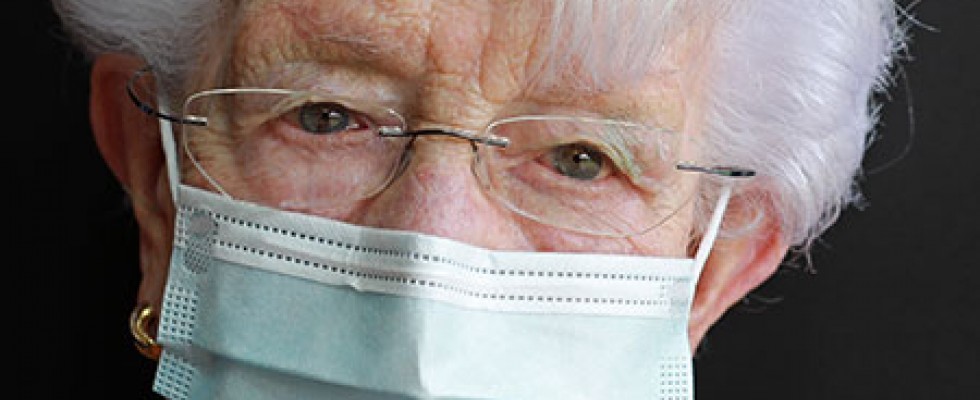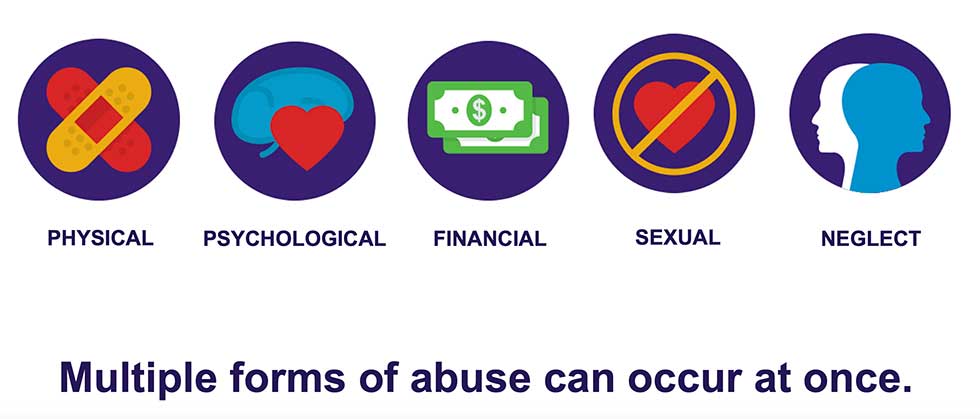
Elder abuse can happen anywhere—including in a person’s home. Older adults may be mistreated by family members, caregivers, strangers or friends. An estimated 1 in 10 Americans older than 60 have experienced some form of abuse, according to Julie Schoen, deputy director of the National Center on Elder Abuse, which is housed at the Keck School of Medicine of USC. And that may be a low number, as elder abuse is underreported.
A study in New York state found that for every elder abuse case known to programs and agencies, 23 cases were unknown. When it came to financial exploitation, for every case that reached authorities, 44 went unreported. A national elder abuse incidence study published in 2003 estimated that only 1 in 14 cases of elder abuse ever comes to the attention of authorities.
One high-profile case emerged in 2007, when Brooke Astor, the wife of the late billionaire Vincent Astor (a member of the prominent Astor family), was financially abused by her son, Anthony Marshall. He not only siphoned off millions through his power of attorney but also reduced Astor’s care level, resulting in neglect. Astor’s grandson, Philip Marshall, filed for guardianship and eventually testified against his father in the case.
Elder abuse is a hard topic to tackle. Seniors can face a variety of abuse, from neglect to physical abuse to sexual abuse. This can affect their ability to age at home, as the trauma from the abuse may further cognitive decline or render the senior hospitalized. If experiencing financial abuse, seniors may find themselves unable to keep up with bills and other obligations, forcing a move to a facility.
Home health agencies can help by training caregivers to watch for signs of abuse, said Schoen. Social isolation contributes to abuse, and if a senior is being isolated by a family member or friend, staff members should be alert for signs of abuse.

A Funding Problem
Preventing elder abuse and enforcing the laws around it requires funding. The Elder Justice Act was passed as part of the Affordable Care Act (ACA) in 2010, which authorized $720 million over four years to fund different programs, including the state Adult Protective Services agencies that serve as investigators for accusations. The program has received just $50 million in the 10 years since the ACA was passed, according to Robert B. Blancato, national coordinator for the Elder Justice Coalition (EJC), an advocacy group dedicated to raising the profile of elder abuse through the passage of legislation.
“One of the lessons that you learn in (Washington) is that there a big difference between what you get authorized in the passage of the law and what you get appropriated, which are real dollars that go into programs,” said Blancato.
The EJC is pushing for more funding to back the Elder Justice Act. But in 2020, Rep. Ann Wagner Missouriintroduced HR 8114, the Emergency Support for Nursing Homes and Elder Justice Reform Act of 2020. The act legislates nearly $225 million in funding for elder abuse prevention and services for victims, including $60 million for adult protective services between 2020 and 2023.
In a bill related to the Elder Justice Act, funding was provided for criminal background checks for people seeking employment in long-term care facilities. The pilot program demonstrated a high success rate—but less than half of states implemented the program after the law was passed.
“One of the big reasons the states didn’t take advantage of the program was a matching requirement,” said Whitmire. “For any funding, the feds put up the states had to match it and it’s always hard to find money within a state budget.” Whitmire added that some states also had laws prohibiting a background check and an unwillingness to go through the lawmaking process to change it.
The Need for Data
The Elder Justice Act did create a national reporting system for instances of elder abuse, the National Adult Maltreatment Reporting System (NAMRS). The goal is to get wider reporting of elder abuse and a more accurate picture of the problem.
Before NAMRS, states reported their own data in different ways, also leading to confusion, said Meredith Whitmire, federal policy and media coordinator for the EJC. There were also outdated reporting systems nationwide.
Adult abuse prosecution lacks the resources and forensic investigative power that agencies working to prevent child abuse have, according to Blancato. Seniors often enter the hospital with a bruise, and it’s automatically assumed to be a fall. Better forensic investigation could help stop and prevent abuse. A forensics center at the University of California in Irvine acted as a model in investigating elder abuse. The center also explored how to improve on forensic work in the space. The Elder Justice Act is designed to fund six additional centers that would conduct forensic work specific to older adults.
Without data, Whitmire and Blancato said, the funding isn’t coming for the programs to prevent abuse.
Collaborative Efforts
In addition to NAMRS, the Elder Justice Act created the Elder Justice Coordinating Council out of 15 federal agencies that have some role in preventing elder abuse. The secretary of the Department of Health and Human Services acts as chair of the council. The council is charged with identifying and proposing solutions to the problems surrounding elder abuse, neglect and financial exploitation. The council is a permanent group that meets twice a year with the goal of better coordinating the federal response to the elder abuse problem. The council has enjoyed wide bipartisan support, probably because it doesn’t require much funding, said Whitmire. The participating agencies don’t have to carve out part of their budget in order to participate in a meaningful way.
Blancato noted that there are 64,000 people working for the Social Security Administration that can help prevent financial abuse, but they need guidance and training on what to spot. Coordination with other federal agencies can help improve results.
Finding a Solution
While many of the issues around elder abuse prevention center on future funding, home health providers can help today—both within their agency and community.
“Constructing community supports and human services for caregivers and older adults can alleviate risk factors tied to elder abuse,” said Schoen. “Increased funding can support efforts to train practitioners in aging-related care. Identifying ways to empower older adults will reduce the harmful effects of ageism. And leveraging expert knowledge can provide the tools needed to identify, address, and ultimately prevent abuse.”
That’s especially critical because 95% of seniors live in their own homes, Blancato said.
“Elder abuse occurs in the community, and we need to be sensitized and provide the on-the-ground community-based services that are necessary to prevent the elder abuse that occurs in the home or in the community,” he added.
When a homecare provider invests in training to help their caregivers identify and report elder abuse, it helps build trust in their services—and can save lives.
“Homecare workers are the eyes and ears when they go into the home,” said Schoen. “Whether they notice neglect or see that’s there no food in the fridge; noticing bills on the table. Just bringing it to someone’s attention and being observant can make all the difference.”
Reporting Elder Abuse: Tips to keep seniors safe
- Before beginning your interview, get in the right mind frame. Take a moment to clear your mind of stereotypes—good and bad—about older adults.
- Like victims of other domestic violence, treat older victims of abuse with respect. Conduct their interviews with the gravity their situations deserve.
- Know that people with memory problems can still tell you what happened—especially if an event made an emotional impact.
- Believe their story unless you have specific evidence to the contrary.
